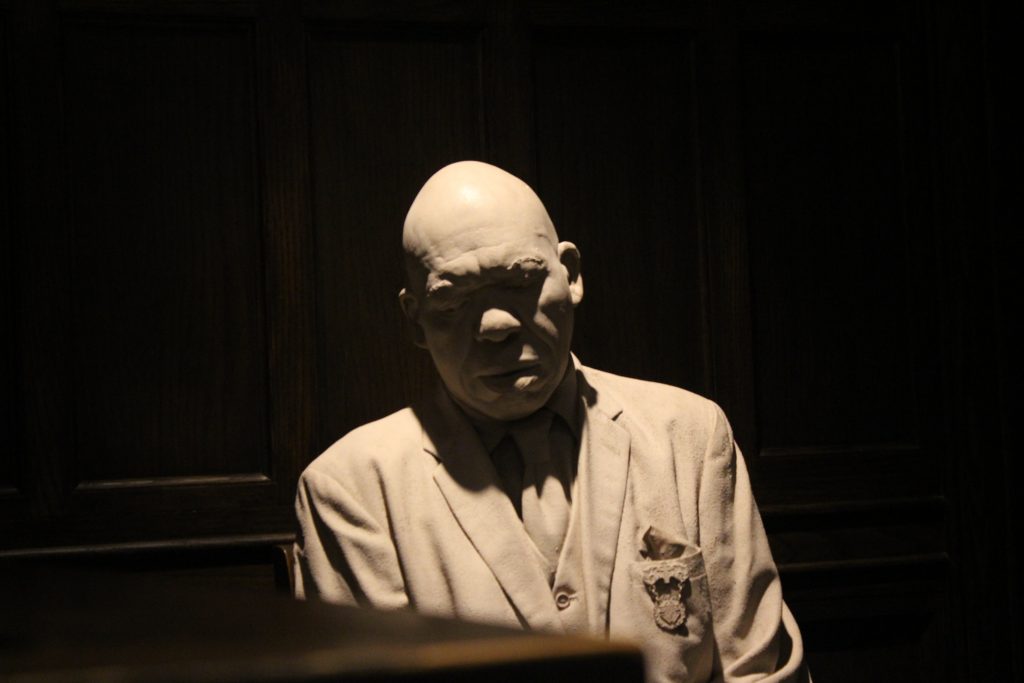Story & Photos by: Isabella Haff
Stereotypes are a widely held but fixed and oversimplified image or idea of a particular type of person or thing. They allow people to quickly categorize others and often come from ignorance or the desire to maintain power.
JaTaviah Tarver, an African American student in the Rural Health Program at The University of Alabama said that when she experienced harmful stereotypes in a hair store it made her feel weird in her own skin.
“It made me aware that I’m growing up in a world where people’s first judgment of me isn’t based off of what I say but based on my skin color.” This feeling is unfortunately a daily reality for many people of color.
While they might seem like simple assumptions, stereotypes have real, harmful effects on individuals and communities. An individual’s reputation precedes them. It can help provide opportunities that they may have not otherwise had access to, as a result maintaining it is a high priority and slander can be damaging, even if it occurs at a broad level. This is clear in America where stereotypes have deep roots in history and racism.
For instance, during slavery, Black people were stereotyped as dangerous to justify their oppression. While ending slavery may have physically freed slaves from their masters, it did nothing to address the damaging general opinion surrounding them. This kind of treatment is also frequent towards immigrants seeking protection and better lives in our country who are often stereotyped as criminals and job stealers. The impact of these labels on multicultural communities can be seen in many areas of life.
According to the National Institute of Health, “Stereotype threat reliably induces arousal and anxiety.” For example, stereotypes about an Arab American being oppressed can lower her self-esteem. These effects aren’t temporary and constant exposure to these types of stereotypes can lead to anxiety, depression, and low self-worth.
Stereotypes do not fade with time, as more and more people begin to adopt them, they define the group that they were spread about. According to Number Analytics, “when individuals are judged based on their racial or ethnic background, they may be denied access to education, employment, or other resources.”
Jim Crow laws were formed from lasting hatred towards freed slaves. These laws were created to dehumanize Black Americans, segregating them from their own societies. Not only did they have to endure harsh language and cruel physical treatment, they were denied service at businesses and access to resources which held them back from thriving both individually but as a community as a whole.
For example, after the Supreme Court’s ruling in Brown v. Board of Education (1954), nine Black students known as the Little Rock Nine enrolled in the all-white Central High School.
Due to the public opinion, teachers treated them unfairly and school administrators offered little protection making it difficult to gain an education. After World War ll, while the job market was in high demand for white Americans, Black workers were excluded because of racist stereotypes that portrayed them as less intelligent or unreliable.
Stereotypes can negatively affect people culturally by misrepresenting diverse groups. For example, Native Americans have been misrepresented by harmful cultural stereotypes such as being portrayed as savages. These portrayals erase individuality.
The media plays a role in either strengthening or breaking down stereotypes. TV shows and movies have historically portrayed minorities as criminals or victims rather than human beings. When people see this it shapes how people think even if they have never met someone from that group.
In recent years, the media has become more aware about its great impact, especially on young children, and has begun humanizing characters from multicultural backgrounds, showing them as complex characters in inspiring roles.
“Honestly I feel like our culture is becoming a trend where people just go with it,” said Tarver. “For example, Black girls like to do their edges and we’ve been doing that for years. We’ve been called ‘ghetto’ and ‘so weird’ but when Hailey Bieber did it and called it ‘sticky bangs’ everyone was on top of that.”
The end result of stereotype boost by the media and individuals is their involvement in everyday life. For example, when a store employee follows a Black teenager around assuming they are going to steal something. These moments build up and send messages that people are not welcomed or trusted.
However, this does not have to be the case.
There are several movements today such as Black Lives Matter, National Association for the Advancement of Colored People (NAACP), and #StopAsianHate that helps communities challenge false stereotypes.
While stereotypes have caused harm for ages, community efforts have challenged these beliefs offering greater hope for the future. By breaking down stereotypes, multicultural communities and all Americans can build a stronger society.


